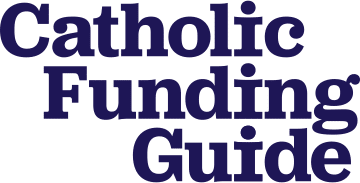Here are five tips to consider for successful grant management:
1. Coordinate grant-related responsibilities and timelines.
Organizations generally establish one point person to coordinate and track all grant requirements for the organization. This is an especially essential role when an organization is managing multiple grants across multiple departments and timelines. To assist with tracking multiple grants, you may want to try a free template from Smartsheet. Carefully review the funder’s grant agreement to note any terms, conditions, or organizational requirements that need to be fulfilled, especially as they pertain to the payment process. A grant management tracking system should also include:
- Funder’s name, website link and contact information
- List of previous grants received from funder, along with previous grant documents and reports
- Name and purpose of current grant, term of grant, due dates for reports and/or other requirements, payment schedule, grant budget
2. Prepare for reporting requirements by transitioning the grant proposal to an implementation plan.
In the nonprofit environment where there is never enough time in the day to meet all of the client demands, it is easy to become hyper-focused on service delivery and lose sight of collecting data for grant reports. This may be avoided by using the grant proposal as a framework to develop a project management plan that clearly defines staff roles and responsibilities for tracking and measuring grant progress, along with internal deadlines to deliver data and anecdotal evidence to the person responsible for grant reporting.

3. Provide timely communications with the funder.
Open and frequent communication is essential to maintaining a trusted relationship with the funder. Several key phases of the grant life cycle call for communication:
- Award acknowledgement – As soon as you are informed of the grant award, provide a response to the funder to demonstrate accountability and gratitude. Review the funder’s grant guidelines to determine how the funder prefers to be acknowledged for internal communications and external publicity. Some funders may wish to give anonymously while others expect or encourage public recognition.
- Progress reports – Review grant guidelines carefully to submit report requests on time with pertinent information. Accurate and timely reporting not only supports the effectiveness of your relationship with the funder, it may also be a factor in future funding decisions.
- Change management – Inform the foundation if any significant changes occur with your organization or the funded program, including changes to staffing, budget, timelines or anticipated results. Funders usually understand that many variables or unforeseen circumstances can prevent programs from progressing. However, most funders prefer to learn of the changes or challenges when they occur, rather than reading about a derailed initiative through a progress report or grant evaluation.
- Stories of success – When your program and/or organization reaches a milestone, hosts an event, or is recognized externally in the community, share your good news with the foundation’s program officer through a quick call or email. Checking in between reporting cycles helps to develop a stronger relationship with the funder.
In addition, if the foundation offers opportunities to highlight your program through their own publications or social media, consider sending photos and concise stories describing the impact of your program.
4. Track progress and collect outcome data.
Reporting requirements may vary by funder – from progress updates to financial reports. These requirements should be included in the grant implementation plan with clear direction on the staff responsible for tracking and collecting data, as well as how the data will be collected and where it will be stored.
Depending on the length of the grant term, foundations may request grantees to conduct formative assessments of the program to report on any developments, improvements, or changes related to the goals established in the grant proposal. After the conclusion of the grant term, foundations may request a summative assessment of the program’s effectiveness and its ability to meet the stated goals and deliver the intended benefits.

Many organizations have utilized the development of a logic model or theory of change as a method to visually map how the organization will enact change and achieve the intended results. The W.K. Kellogg Foundation defines a program logic model as “a picture of how your program works – the theory and assumptions underlying the program. …This model provides a road map of your program, highlighting how it is expected to work, what activities need to come before others, and how desired outcomes are achieved.”
The components of the logic model include:
- Resources/inputs: the materials and resources needed to operate the program;
- Activities/interventions: the actions taken to use the resources to accomplish the intended change;
- Outputs: the amount of product or service that was delivered to influence the change, the evidence that the activities were performed as planned;
- Outcomes: the change in the program participants’ condition or behavior as a result of the planned activities;
- Impact: the long-term change that occurs in a community or system as a result of the change in condition or behavior of the program participants.
The W.K. Kellogg Foundation provides the diagram below as an example of the logic model.

While this example is a high-level, simplified way to map out the components of a program that influences change, the Community Tool Box, provides additional examples and explanations of the application of logic models, including the idea of “nested models” that allow for varying levels of detail as the models move from a high level to a more detailed view on the ground.
The table below provides an example for how the logic model may assist your organization with determining the type of data to collect for a grant report. This example is based on a smoking cessation program.
Inputs |
Activities |
Outputs |
Outcomes |
Impact |
|
|
20 participants attended for 10 weeks |
15 of 20 participants quit smoking and remained nicotine-free for twelve months |
15 former smokers were able to live healthier lives and prevent the harmful effects of second-hand smoke on their families
|
The frequency of the reports required by the foundation and the term of the grant should be noted when determining the outcomes you plan to track. Since impact is usually measured over a longer span of time (5 years or more), and grant terms are usually 1-3 years, it is less common for a grant report to require a measurement of impact.
5. Monitor the grant and program budget.
In addition to understanding the effectiveness of the program in which they have invested, funders also require accountability for the grant expenditures to verify that the funds are spent for the intended purpose. Tracking the revenue and expenses specific to the grant through a separate cost center in your accounting system is one of the most effective ways to maintain transparency and provide accurate grant reports. Free templates are available from Smartsheet to help you develop a clear and accurate budget tracking system.
The five tips above provide some general guidelines to keep in mind as you build your grant portfolio and develop ongoing partnerships with funders. Many funders provide training and/or coaching for new grantees who may not be familiar with the grant management process. By taking the time to plan and implement an effective grants management system, you will be increasing the likelihood of future grant awards, and allowing your passion for your organization’s mission to continue.


